In the last post, Marc and I tried to pull the curtain back a bit and shed some light on the side of Art Direction that artists don’t often get to see or consider—the side that faces the businesses and corporations and editors and publishers. Overall, I was concerned that many people feel companies are hostile to artists where the truth more often is simply that these are big behemoths of corporations that have many many people working for them, each with their own agendas and motivations and priorities. Art Directors stand in the middle of these business concerns and artists, and try to navigate the best working environment for both. Oh, and get fantastic art made!
I have also had a growing concern that I’ve been more frequently seeing instances of people somewhat bitterly blaming ADs for things they have no control over, like many companies’ contracts and pay rates. I’m never going to say there aren’t bad eggs out there, but I stand by my belief that most companies, and most ADs, (and most artists), are not out to screw each other. They just have different priorities, and often times bad communication.
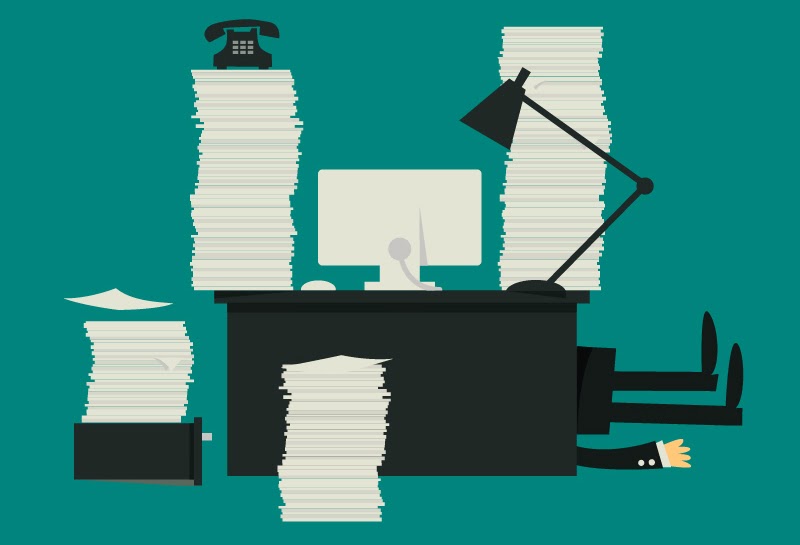 |
| The Ugly Truth Behind Every AD Job: Much More Paperwork Than Sex. |
I also mentioned PACT in my post, not only to highlight a concern I had about conversations in this area too easily turning bitter, but also to state that I, and many ADs, support the idea of artists organizing and having a unified voice with which to negotiate within the industry. Marc and I both stated that we as ADs hope to be included in this process of change, as we are already the natural diplomats in the middle, furiously translating between business and art, who speak in very different languages.
After the post, Jim Pavelec contacted me and wanted to discuss the issues we addressed in the post, and I thought it would be a fabulous opportunity to continue the discussion in a public forum. So first I’ve asked him to explain a bit about PACT, for those of you who are not familiar with the group, and then I asked him to pose questions that he’d like to ask of us in response to what we posted last week.
Jim Pavelec on PACT:
I have spent fifteen years as a fulltime freelance illustrator in the tabletop gaming and comics industries. In that time the pay and conditions under which illustrators are asked to work have steadily degraded. At conventions, on the phone with my artist friends, and online I heard the same complaints over and over again, but nothing was being done to address these issues. The most that any of us could do as individuals was tell the art directors we were working for of our concerns.
With this in mind, I came up with the idea of a website for illustrators in this industry. I called on a group of supportive fellow illustrators and we hashed out the details of what became PACT (Professional Artist Client Toolkit). The official site will launch at the end of January. Until then you can join us for lively discussions on our facebook page.
PACT will be first and foremost an informational resource, because we believe an informed artist has a better chance of negotiating better terms for themselves and making better decisions. There will be articles written by professional artists and art directors covering just about every aspect of being a freelancer. There will be sample contracts, and other information gathered by our lawyer to help artists more easily understand the terminology of a contract.We are also including what we believe will be a very effective tool to aid in our struggle, a review system. PACT members will be able to post reviews of the companies that they work for. Each review will cover four areas: amount of pay, timeliness of pay, contract, and ease of work. We believe it will benefit every artist to be able to log into PACT and see if a company they have been contacted by, or are thinking about contacting, treats its artists well.
PACT is not an us against them type of organization, especially in the case of art directors. PACT knows that ADs don’t set budgets or write contracts, and we’ll be covering those topics in our educational articles. We hope that the website will provide data that ADs can take to their bosses, and enable them to make a stronger case for better pay and more flexible contracts. That being said, we will post an occasional story regarding what we consider to be unethical behavior, so that artists can stay informed and be cautious.
Now, on to more questions!
JP: Open communication with ADs is the primary means by which conditions for artists will improve in our industry, but many artists are afraid to “rock the boat.” What advice can you give to artists who are worried about being seen as a pain?
MS: When I work with artists I want as few obstacles after contracts are signed, I want questions to be answered up front, so please ask! The worst thing in any business relationship is to hand-waive your own concerns only to have them rear their heads later. Negotiations are rarely easy, and after a contract is signed negotiations are close to impossible, and that is the real pain.
Here’s an easy example: Let’s say my contract with an artist didn’t specify how many revisions we were allowed (which, for the record, ours does). Now we’re almost done and we have a few requests, but wait, the artist says they have already done their standard 3 revision requests and more will cost money. Now I’m stuck and I have to snake-charm someone, either the artist to give us the “extra” revision which we assumed was included, or my bosses to expand a budget that was already approved by all the 10,000 stakeholders. Now THAT is a pain, and the artist asking up front for clarity on revisions would have avoided the problem entirely. In some cases, the artist asking would help us improve the clarity and terms of our contract and give me that glowy feeling that makes me want to hire that artist again, and again, and again.
Trust me, it would make my job tons easier to just hand off the contracts and paperwork to Legal and Accounting, but artists would probably never get paid if I wasn’t overseeing the process. Also, it has been my experience that it is the rare artist (myself included) that is good at following directions on forms and filling out paperwork properly. I have the care and motivation to check every piece of paperwork that comes through my inbox, every invoice, and make sure it is correct. No one but an AD will do that. At best from Accounting you’ll get an unexplained bounce-back email. At worst your invoice will stall in paperwork limbo for all eternity.
MS: Acting as the middle-man for those communications is my job and, as I said in our last article, it’s a process I enjoy. I’m here as an AD because I understand enough about the art process, and enough about the operations side, that I can serve as an efficient conduit.
Is there another way? Maybe, but I don’t know what it is, and certainly asking an already swamped legal team to try to manage 10, 20, or 100 points of contact, vs. just one (me), is inefficient.
That said, the unspoken question here is about trust. We, ADs, have the backs of our artists. We often ask for things our artists didn’t even think to. In many cases, we’re a better advocate for the artists than the artists themselves. That’s not arrogance, just experience. Now, I don’t know all my artists personally, yet I am implicitly asking them to trust that I am their advocate, to trust me. That can be a big ask, especially for artists who know their own way around licensing and fees. I think I speak for all the ADs I know when I say that that implicit trust, that contract between me and the artist, is one I take very seriously. The thing I know is that this isn’t a zero-sum game, so I am constantly looking for ways to increase the reward for both my internal team, and for the artists themselves, without taking anything from the other.
LP: I would love to see PACT join ArtOrder and Muddy Colors as a force for education in both directions—not only educating artists about what really happens in business, but also educating ADs about what artists’ real concerns are. I feel like artists are often scared to be seen as “complainers” and it’s only the artists who I’ve become true friends with that tell me their concerns openly and without a sugar coating (you know who you are, ha). If PACT is showing artists that you can have open honest dialog with ADs and we can take your collective concerns back to our companies and use it as leverage, then that’s going to be a real force for change.
MS: I agree with Lauren. I think the rating system is valid, and I think PACT has an opportunity to use that data to open conversations that affect positive change. If an AD can say, “Oh hey, we have a 1 our of 5 stars because we’re work-for-hire and pay poorly,” they have more leverage.
JP: If a company is acting unethically towards the artists they use, how best can our community deal with that problem once it has been discovered?
LP: With so many artists reporting in, PACT is going to be perfectly placed to see what complaints are isolated incidents and where real problems are developing with a company or AD. In the case of a company policy being the problem, it’s very likely that the AD already knows and often already disagrees with the policy in question. I think PACT contacting the AD privately first, and discussing the matter honestly with them is going to start to resolve a great deal of conflicts. In the case of changing corporate policy it takes time to shift bureaucracy, but getting a PACT lawyer to sit down with a member of my legal team or HR rep would totally be something I would be thrilled to facilitate if the need arose. That’s so much more impressive that an AD saying to their boss that their artists are individually unhappy.
If the problem is directly with an AD the situation is a bit more delicate, but again I think contacting the AD first is the best step. I don’t think you can assume that you know what’s going on just from hearing the artist’s side. Again, I know there are bad eggs out there, but in my opinion there are very few ADs that last in this biz by being jerks. There’s just not enough reward in the job if you don’t love what you are doing. And no one who loves what they are doing are going to be jerks if you ask them to explain their side of the story. PACT stepping in and asking the AD for clarification on an issue, or to have a conversation about methods will, I bet, clear up most issues, or will at least get the ball rolling towards change in a company, or at least open a negotiation. I think it’s tempting to want to publish emails or name names, but that’s a slippery slope, as it’s too easy for that to spiral out of control. I think publically outing someone as “a person to not work with” should be more of a threat at last resort, not a first step. Once you publically air someone’s dirty laundry you’re certainly not going to be able to have an open conversation after the fact. Once you do that, the conversation is over, and any potential for solving the problem is abandoned.
MS: Since Lauren, again, nailed it, I’ll share the other side (challenging as it is to admit mistakes), and prove that experiences can be lessons. I am slightly embarrassed to say that I’ve tried methods other than Lauren’s, such as getting everyone I know on FB to tag and call out an author who didn’t credit her artists. Now, to be fair, I tried commenting on the author’s post to ask her to credit the artist, but the comment was never approved. The article was updated, but in the end I am sure the author felt burned, and I’m not convinced she will do the work to credit artists in the future. The lesson she may have learned is to avoid me or art-related posts. She certainly didn’t keep in touch with me to show me she has changed her ways.
Public shaming can get a short term result, but the bad mojo will create more of a communication gap and potentially reduce the amount of credit or exposure artists can get.
I am not embarrassed to say I learned from that experience and have since taken a more direct communication strategy with better, and proven long-terms changes as a result.
JP: What do you think would be the most effective means of combating the attitude that the artists in our community are “hobbyists” and not professionals?
MS: This is kind of a trick question for me because, like Lauren, I don’t know an AD who considers their artists hobbyists. If an AD did suggest that, I would speak with them directly.
I do know that individuals and self-publishers don’t always understand that we do this for a living. How many of us, artists, have gotten that email, “We don’t really have a budget, but we’d love for you to do some work for us,” as if we are sitting on the couch just waiting for someone to give us a good idea. This is a larger issue that can only be solved by educating artists about what they are worth, and in an ideal world also educating individual art buyers. This is why I recommend artists talk to each other, either through PACT, Facebook, or other means, to educate themselves when negotiating work contracts. If you freelance, you have to remember that you don’t have to work in a vacuum. I certainly ask around, both in my AD and artist roles.
The thing to remember here is that often the people offering these terms aren’t bad people, and their logic makes sense to them. For example, I was working at a company that needed some art, and I suggested we hire a friend, let’s call him “Tim Paul Smith.” I said he was our guy, and the CEO suggested we have “Tim” do some sketches, and if we liked them, we would hire him. I explained that this was spec work, we can’t ask anyone to do work for us for free, and at the very least we have to pay for the ideas up front, because those ideas might help us get our own ideas. In the mind of the CEO, spec work made sense because nothing on “Tim’s” website looked exactly like what he wanted so he wanted an idea of what he would get. After I explained that this was liking asking a lawyer to send us a contract outline for free, he got it and we paid “Tim” for some initial sketches for the project.
Interesting to note that in that case the AD (back-pat to me, thanks) stepped in before even going to the artist because I understood both sides. However, with an individual client, the artist has to have enough know-how to explain clearly, and without sounding whiny, why they require certain terms or payment. If the client can’t meet those terms, they still might not be bad people, and the artist should just not take that job.
This also emphasizes the previous answer about asking questions up front. And we do this too! When I was working on a new non-Work-For-Hire contract at Treehouse, I rang up a few AD friends (like Lauren) to check my language and make sure I wasn’t missing anything, both for the company and the artist. Again, my role is to make sure both sides were happy and I wanted a slam dunk, so I checked my math before sending my proposal.
JP: Aside from good artwork, what is the most important thing you want from a freelancer?
LP: Clear, honest communication. If you don’t understand something, ask for clarity. If you are running into a problem on a commission, let me know. If there’s a crisis in schedule, tell me as soon as possible. Most problems can be worked out, but only if I know about them as early as possible. I never feel “annoyed” by an artist asking questions, or following up on a payment, or sending WIPs. Always err on the side of more communication rather than less. I think the Number One offense among Ads (or at least what gets an artisty on the most-gossipped list) is when an artist just disappears mid-project and leaves the AD scrambling. Just be honest and fess up if you hit a snag, we may not be happy, but we’ll appreciate the courtesy of a big heads up.
MS: Good communication, clear and timely. I don’t like telling my team to expect something Tuesday and having a full inbox on Wednesday morning with questions about where the deliverable is. I much prefer getting an email the Friday before letting me know about a delay so I can set expectations on my side.
Jim: I’d like to thank Lauren and Marc for bringing me in on this important conversation. It is a precise example of everything that was discussed above. I saw something in Lauren’s initial post that concerned me regarding PACT. I sent her a polite (yes, I know you’re shocked) message and we talked it out, which lead to all of us contributing to this follow up article. This way, we could share with the readers some solutions to what I know are common problems for illustrators. I would also like to assure everyone that PACT is going to have resources that cover all of the points Lauren and Marc brought up, and then some.
Lauren: You know, Jim, I didn’t think of it like that, but if this is a test case of the attitude that PACT is going to have going forward, then I can honestly say I continue to support it in any way that I can. I’m really glad that you reached out after the last post, and I was really glad that you agreed to take our conversation public in this post. I’m certainly not perfect (did someone say paperwork?) but I will always have an open ear to open discourse with the artist community, and speaking with a strong majority voice is definitely going to gain you strength in the business world. I really do wish PACT and the whole artist community the best and I look forward to what positive change you guys can help push forward! Happy Artists = Happy Art Directors!
Marc: Yes! This has been a great conversation. Thanks for bringing me in, Lauren, and thanks to Jim and the PACT guys for engaging us directly. I think PACT has a big opportunity to shed some light on these issues. I hope that Jim and his team continue to work with ADs and their companies to use that information to make positive changes industry-wide.
And we gave the generous Tim Paul a break this week, he’s way too busy decorating christmas cookies, so this week’s illustrations are by Mokik via Shutterstock.



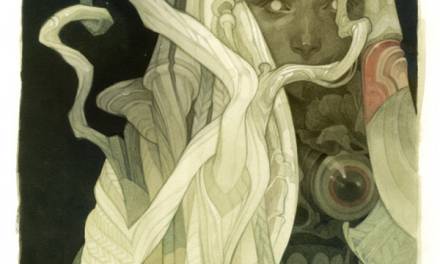
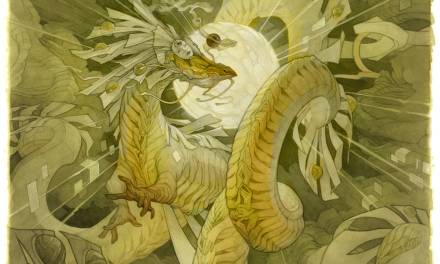
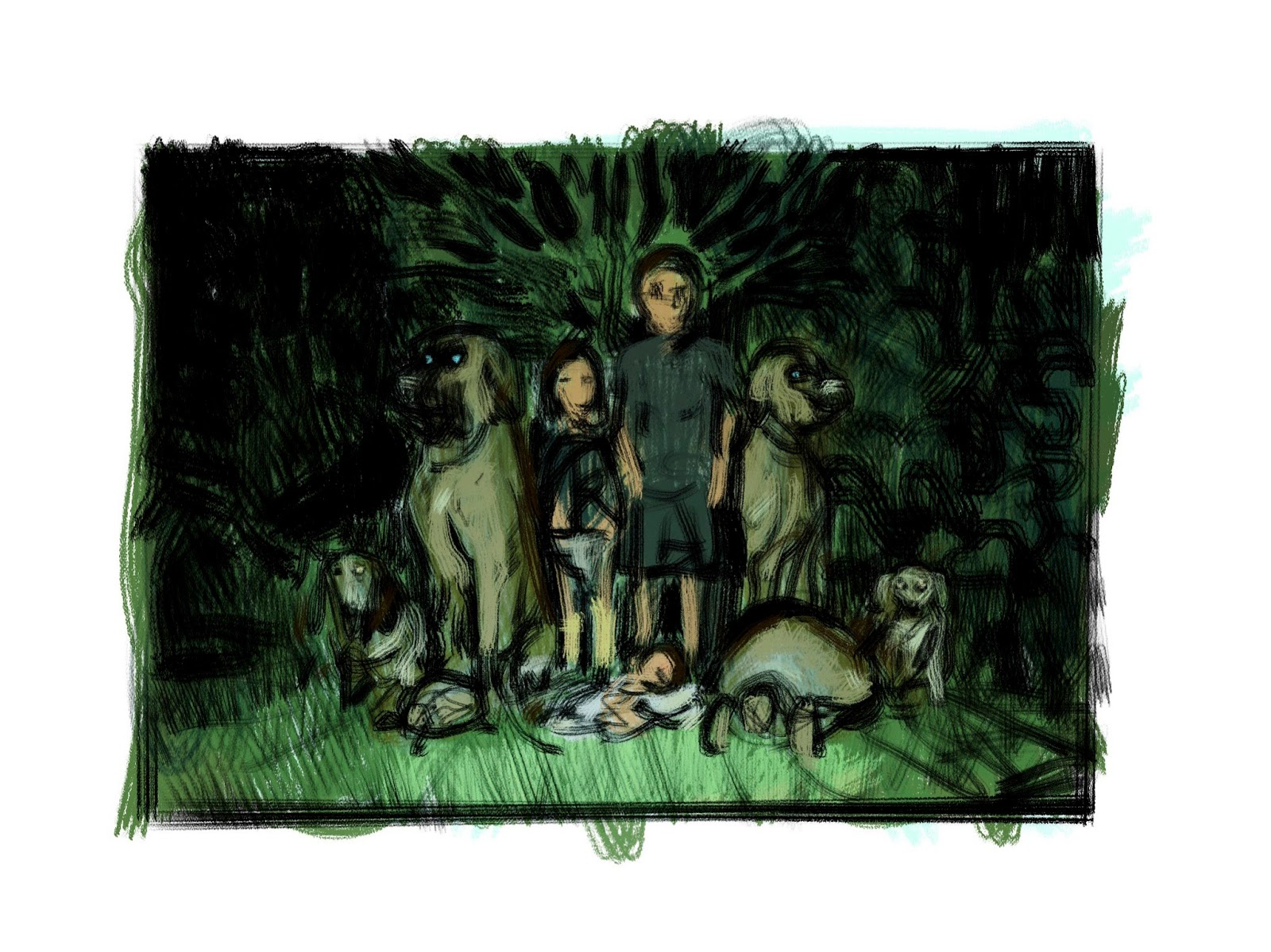
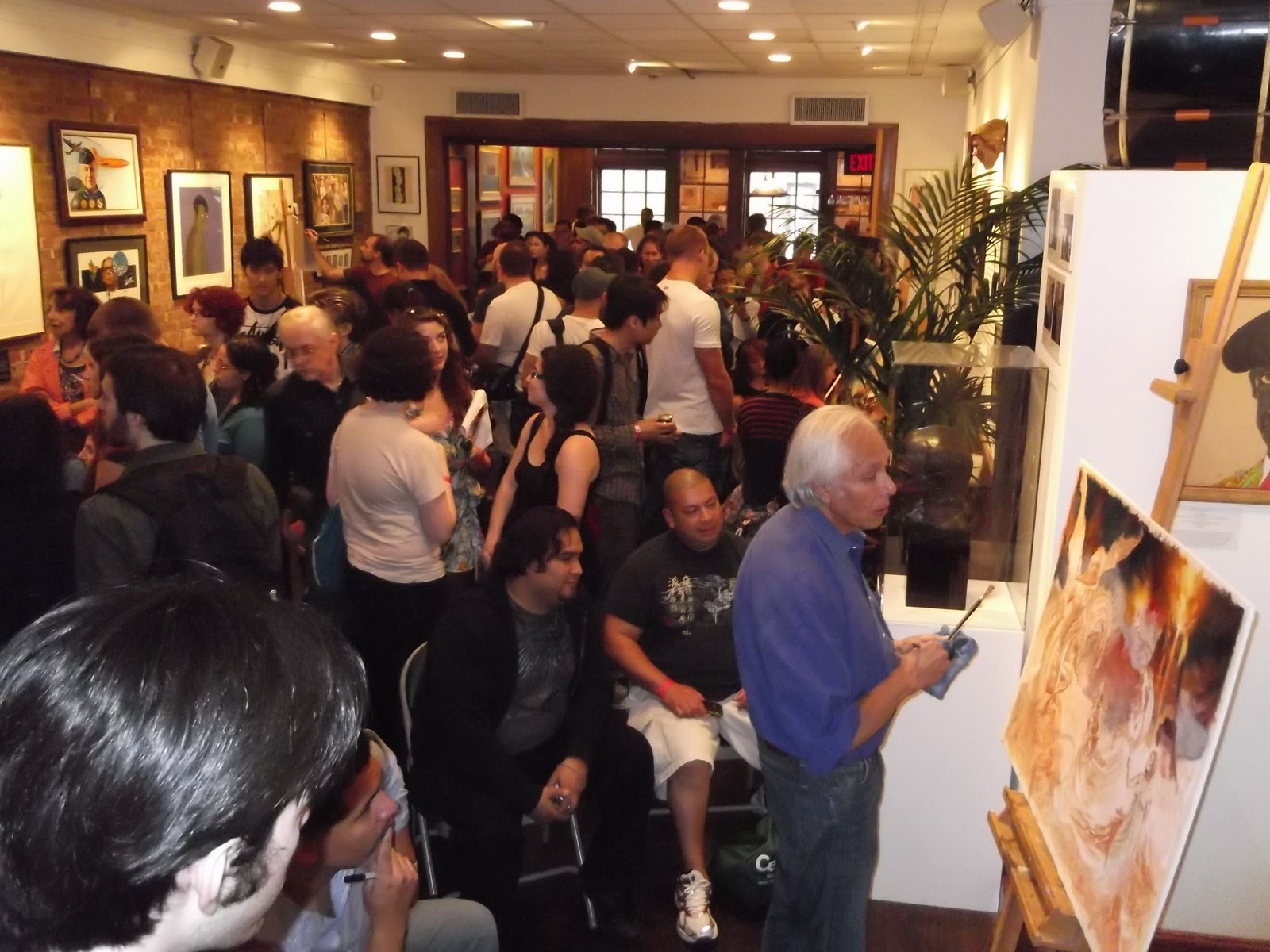
Well, you know you've really arrived when your first comment is spam. LOL.
What? SEO Moz is a great guy and has done so much for the art community.
EYEROLL.
Haa!^
I'm really looking forward to seeing what PACT develops into. I recently worked on a contract for a new little publishing company (no AD little) and it was really tricky to find what I needed.
Always makes my day when I get to my computer, sippin' my coffee, and get to read a post from you, Lauren! And bonus that Marc (waaasaap!) is here too! My brain smiles with all the insightful knowledge!!
Thanks Mark! And thanks for the great work for Treehouse thus far.
In regards to the AD working as the go between for different parts of the company, I agree and I disagree. For legal issue, yes, go to the AD in most cases. They will usually be able to deal with your concerns, and legal has more reason to play nice with them than the illustrator. As for payments, I kinda disagree. I've worked for several illustration reps over the years, and part of my job was dealing with collections. I found the easiest way to get a status update on an invoice was to call the companies main line, ask for accounts payable, and then just say “Hi i'm so and so and I'd like to know the status of my invoice”. Seven times out of ten they'll be able to tell you and give you a general eta on payment. The other three times they'll usually tell you they don't have the invoice. In cases like that I would forward them the invoice directly and then contact the AD to let them know the issue. In the cases where I dealt directly with the AD on a late payment, I found it took a bit longer, usually a few days until I heard anything. Some companies won't let you go directly to AP, but if you can, I found it to be a much speedier process.
Invoices are a whole separate post, for sure. But yes, things like invoices which are non-negotation-based, if you can go directly to the finance dept (or just the finance person) that will be faster. As you say, some companies keep the AD as the buffer especially if the AD is dealing with tons of artists.
That said, I haven't hit that issue at Treehouse yet and our finance dept is one person, so Lauren may be able to shed more light.
I know the scale of economy is different, but in the film/tv industry we have Producers who take care of the go-betweening and leave AD's to AD.
It's the Producers role to handle overall budgets of the project, hiring and firing, negotiations, contracts etc etc whilst the creative aspect is handled by creatives. There is some cross over but for most part it's segregated. It does help if the Producer has some creative background so they understand the issues.
If AD's in publishing are dealing with so many artists for issues other than art, surely it would help to have a producer take that load yes?
That's a great question. My company is small, so we all wear many hats. Lauren would have more perspective on this.
I know, it is…I'm still working with a lawyer friend to put up a good template contract here for artists to use. stay tuned!
Honestly, if someone did that and jumped the train without having me introduce them, I would get in trouble for not being able to control my artists, and it would lead to really ill will between me and accounting, which honestly is a whole load of trouble that I don't understand the point of. Why wouldn't you ask the AD first, at least to inquire who in accounting you should talk to? Why go make trouble in accounting first and then later loop the AD in? I can see this method being a last-resort option if an AD isn't responding to you at all, by why would it ever be the first option to go over people's heads?
In larger Art Depts in publishing, there is usually a studio manager who handles all the paperwork traffic. However, Orbit is a small team and we handle our own paperwork and liaising between Accounting, HR, and our freelancers. As we grow further I absolutely would love to have a studio manager, but the business negotiations would always start with the CD